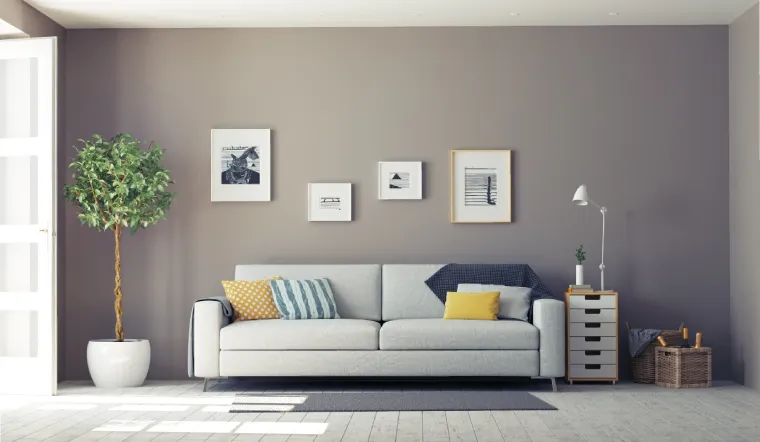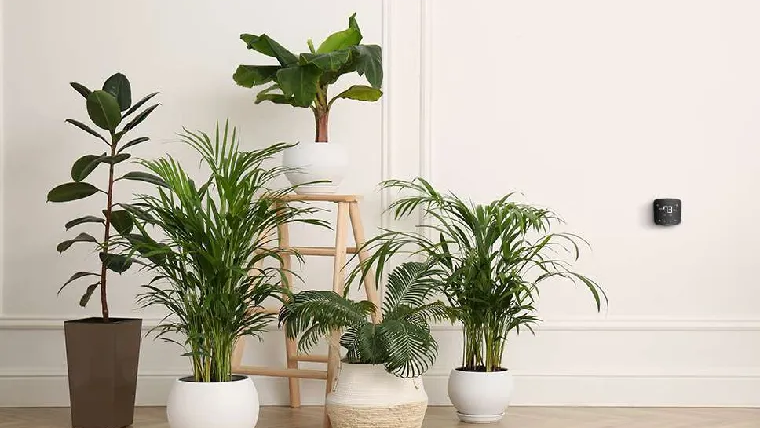Your living space can be transformed into an environment that reflects your personality and style by selecting the right paint colors. Choosing the ideal shade can be overwhelming because there are so many options. We at Trendy Tales are here to help you select paint colors that will improve the atmosphere and aesthetic of your home.
Understand Color Basics
Color Theory 101
Understanding the fundamentals of color theory is helpful before delving into specific colors. Colors are separated into three classes: essential (red, blue, yellow), auxiliary (green, orange, purple), and tertiary (mixes of essential and optional varieties). In addition, colors can be warm (reds, oranges, and yellows) or cool (blues, greens, and purples), each of which evokes distinct feelings and sensations.
The Color Wheel
The color wheel is an essential tool for selecting color schemes that work together. Reciprocal tones (inverse each other on the wheel) make an energetic look, while practically equivalent to colors (close to one another on the wheel) offer a more strong and tranquil feel. Understanding the connections between tones can assist you with making a decent and satisfying range.
Consider Your Space and Lighting
Room Size and Function
Color selection is heavily influenced by a room’s size and function. Darker hues can make larger spaces feel cozier, while lighter hues can make smaller rooms appear larger and more open. Also, think about the room’s purpose: bedrooms should be in calming colors, while kitchens and home offices should be in energizing colors.
Natural and Artificial Lighting
The appearance of paint colors is significantly influenced by lighting. While artificial lighting can alter the hue, natural light can make colors appear brighter. To get a true idea of how paint samples will look in your space, test them on your walls at various times of the day and in different lighting settings.
Reflect Your Style
Inspiration and Mood Boards
Find ideas for your home decor from magazines, websites, and social media like Pinterest. Make a mood board with pictures and color samples that make you happy. You may be able to identify your preferred color schemes and styles thanks to this visual representation.
Existing Décor and Furnishings
Think about the shades of your current furnishings, fine art, and stylistic layout things. Your choice of paint ought to go well with rather than detract from these features. For an agreeable look, select paint colors that improve your current stylistic layout.
Sample and Test Colors
Purchase Paint Samples
Purchase small paint samples once you have selected a few hues. Apply them to your walls in various regions of the space to perceive how they thoroughly search in different lighting conditions. Paint colors can look very different on a wall than they do on a paint chip, so this step is very important.
Observe and Compare
Live with the paint samples for a few days to see how they affect the atmosphere in the room. Think about the examples one next to the other and consider how each variety causes you to feel. Don’t rush through this; taking your time will help you make the best decision.
Explore Different Paint Finishes
Types of Finishes
Paint finishes can dramatically affect the look and feel of your walls. Here are the most common types:
- Flat/Matte: Offers a smooth, non-reflective finish, ideal for hiding imperfections but less durable.
- Eggshell: Has a slight sheen, is more durable than flat, and is easy to clean, making it great for living rooms and bedrooms.
- Satin: Provides a soft sheen and is highly durable, suitable for high-traffic areas like kitchens and bathrooms.
- Semi-Gloss: Has a noticeable shine, is very durable and moisture-resistant, perfect for trim, doors, and bathrooms.
- Gloss: Offers a high shine and is extremely durable, often used for furniture and cabinets.
Choosing the Right Finish
Pick a completion that lines up with the capability and taste of the room. For instance, a matte finish might be better for a cozy bedroom while a satin finish would be more durable and resistant to moisture in a bathroom.
Create a Cohesive Color Flow
Whole-House Palette
Consider developing a color scheme for the entire house to create a cohesive atmosphere. Pick a few main colors and use them in different rooms in different shades and finishes. This method permits each space to have its own unique personality while still maintaining a harmonious flow from room to room.
Accent Colors and Feature Walls
To add interest and depth, incorporate accent colors into accessories, furniture, or feature walls. Smaller accents can tie a room together without overwhelming it, and an accent wall painted in a bold color can act as a focal point.
Trust Your Instincts
Personal Comfort and Preference
In the end, your comfort and taste should be reflected in your home. Pay attention to your gut feelings and pick colors that cause you to feel cheerful and calm. Keep in mind that paint is not permanent; if a color doesn’t work, you can always change it.
Conclusion
Understanding color theory, taking into account the particular features of your space, and reflecting your style are all important factors to consider when selecting paint colors for your home. You can create a beautifully painted home that feels cohesive, inviting, and uniquely yours by following these steps and taking your time to test and compare options. We at Trendy Tales believe that the right colors can make your living space feel like a real haven. Blissful artistic creation!




